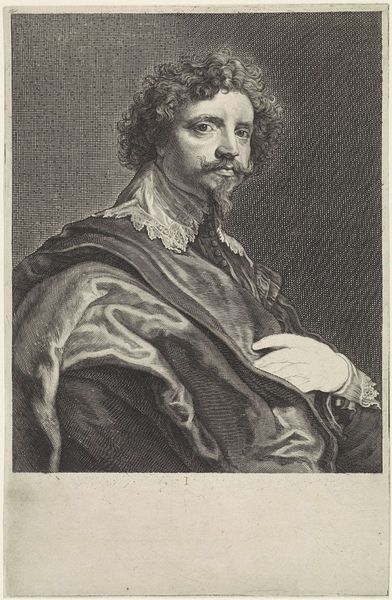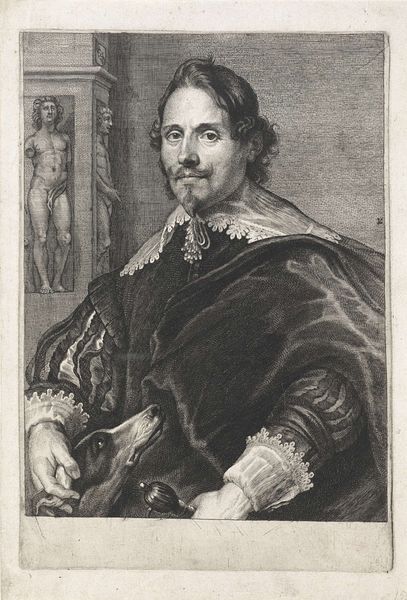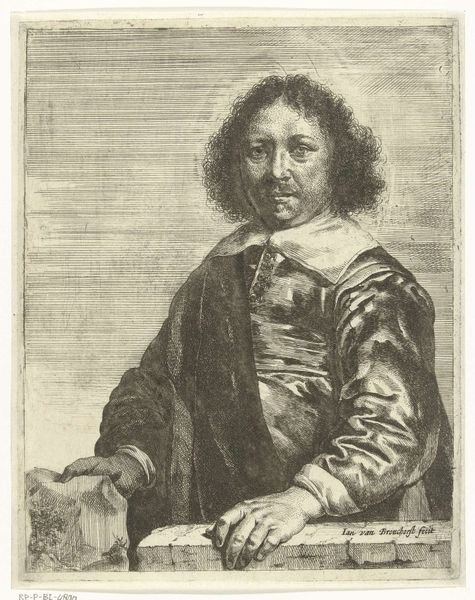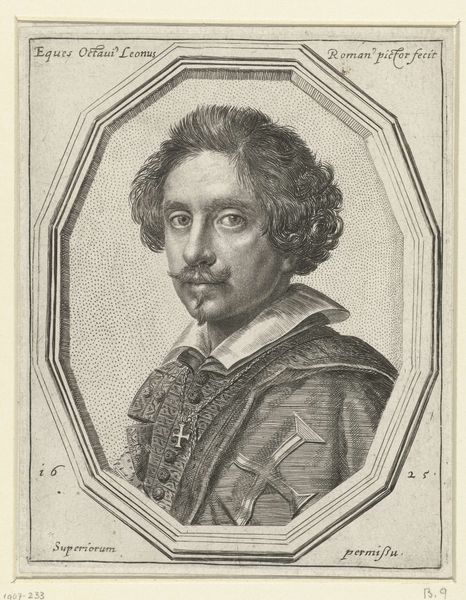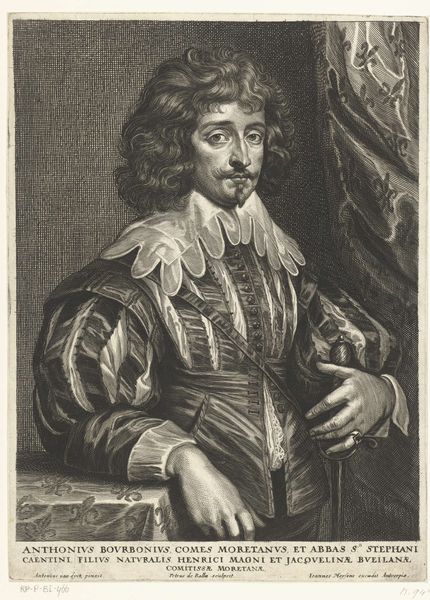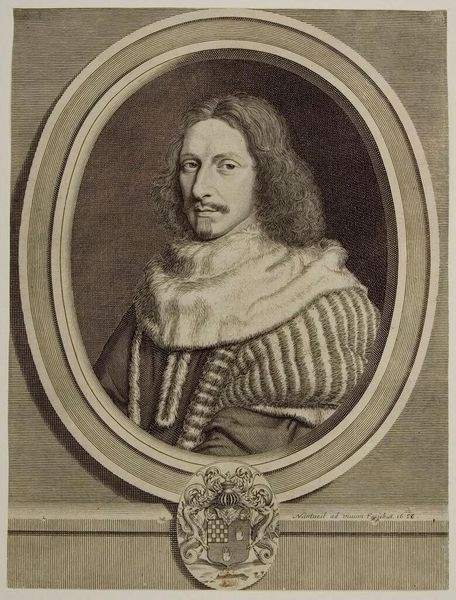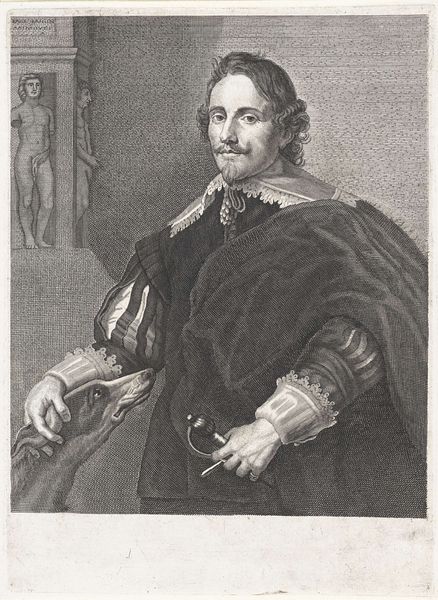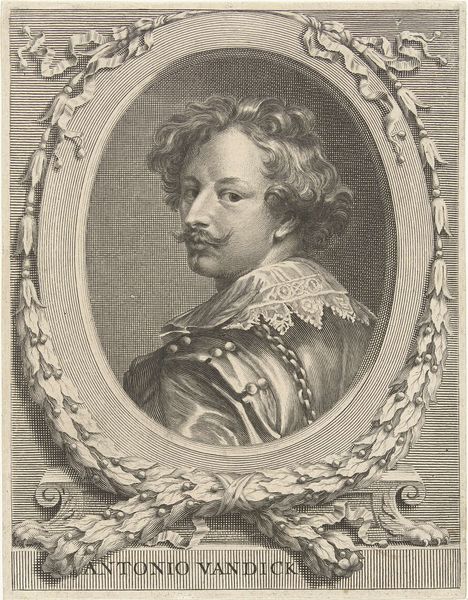
print, engraving
#
portrait
# print
#
portrait reference
#
history-painting
#
academic-art
#
engraving
Dimensions: height 291 mm, width 187 mm
Copyright: Rijks Museum: Open Domain
Editor: Here we have Theodor Matham's "Portret van Michiel le Blon," dating sometime between 1625 and 1676. It’s a print, an engraving, currently held at the Rijksmuseum. The detail is impressive, considering the medium. What’s striking to me is the way the sitter’s clothing is rendered - how would you approach understanding a work like this? Curator: The immediate element that commands my attention is the material production. Engraving, a process demanding significant skill and labor, positions this print as more than just an image; it's a product of its time. We must ask: what social dynamics elevated engraving to an artistic pursuit? What kind of work was involved? Consider the engraver as a skilled artisan embedded in a network of workshops and patronage. This challenges our understanding of what constitutes art versus craft. Editor: So, beyond the image itself, you're drawn to the means of its creation, its status as an object. But what about the sitter - how does Matham portray Michiel le Blon? Curator: Le Blon is depicted, sure, but what’s far more interesting is considering this ‘portrait’ as a commodity in circulation, accessible to a wider audience than an oil painting might have been. The reproduction of likeness— the very act of replicating an image for broader consumption—raises important questions about status and distribution of wealth in that era. The availability of prints contributed to new forms of cultural participation. Were those things available to everybody at the time? Editor: I hadn't considered that aspect. So the value isn't necessarily in capturing Le Blon's essence, but rather in the print's circulation and accessibility as a manufactured item? Curator: Precisely. It reflects the era's evolving relationship with image production, shifting away from unique artworks towards reproducible commodities. It urges us to analyze the art world's structure and dynamics that allowed the creation, marketing, and consumption of this ‘portrait’. It is a mirror that reflects not only the man, Le Blon, but the society from which it came. Editor: That really gives me a lot to think about, it seems there is far more than the face value within such an engraving. Thanks so much for your expertise.
Comments
No comments
Be the first to comment and join the conversation on the ultimate creative platform.
